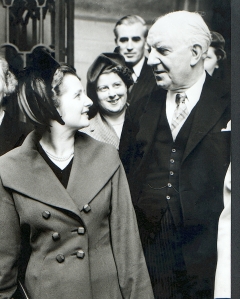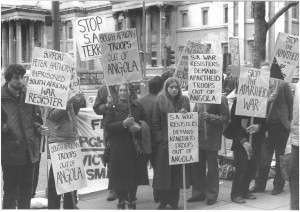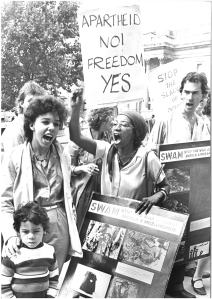PhD student Bethan Foulkes is holding a workshop at PHM next week. ‘From the Poor Laws to JobCentrePlus: A Century on the Dole’ will be held in our mini theatre on Friday 6 June from 11am-2pm. In this blog, Bethan tells us more about the workshop.
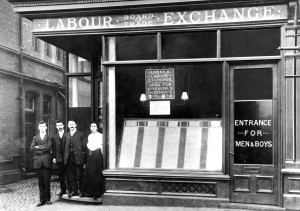 To introduce myself, I’m Bethan Foulkes- a PhD candidate at the University of Manchester, studying late-Victorian conceptualisations of unemployment within the North West. In January, I was lucky enough to gain a position as a Researcher in Residence at the People’s History Museum; a collaborative project between the university and cultural partners, aiming to place academic researchers within cultural institutions who could benefit from their research skills. My project for the PHM is a day of workshops on the history of unemployment relief, entitled ‘From the Poor Laws to JobCentrePlus: A Century on the Dole’. This blog will just outline my research processes, the experience of working in the museum stores, and the ultimate aims of the project.
To introduce myself, I’m Bethan Foulkes- a PhD candidate at the University of Manchester, studying late-Victorian conceptualisations of unemployment within the North West. In January, I was lucky enough to gain a position as a Researcher in Residence at the People’s History Museum; a collaborative project between the university and cultural partners, aiming to place academic researchers within cultural institutions who could benefit from their research skills. My project for the PHM is a day of workshops on the history of unemployment relief, entitled ‘From the Poor Laws to JobCentrePlus: A Century on the Dole’. This blog will just outline my research processes, the experience of working in the museum stores, and the ultimate aims of the project.
At our first planning meeting, Chris Burgess (my contact at the PHM) mentioned that they were in possession of the Department of Employment’s object collection, and that this had sat idle since being donated. The opportunity to be amongst the first people (certainly the first from an academic institution) to engage with these objects was too good to pass up on, and I leapt at the chance. By the end of this meeting it was agreed that my project would research a small selection of these items through the paper records and photographs, in order to discover their histories. The next step was to get down to the museum’s object store, to have a look and what objects were available.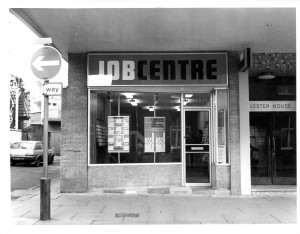
A few days later I got down to the store, and was absolutely delighted with what I found. Dozens of signs and notices, and one particularly beautiful cast iron insignia (of origin still unknown). After some unexpected manual labour to get a good look at everything, the recurrent theme was that of labour exchanges, or job centres as they would later become. There were signs dating from as early as 1913 and the 20s and 30s outlining the services available at ‘labour exchanges’. Similar ones existed from the mid-20th century for the ‘employment exchanges’, and finally signs from the 1970s almost to the current day, for ‘job centres’. From this, the project seemed to write itself; a 100 year history of work for the unemployed, from labour exchanges to the job centre. Shortly after this visit, myself and Chris from PHM decided that the event would be held in the museum galleries. Luckily for me this is where I feel most at home; embracing and absorbing the beautiful and inspiring collections. The stage was set, and now it was time to actually do some work.
As the research project and ultimate exhibition is essentially based around a chronology of unemployment relief, my first step was to make notes for myself of everything I already knew. Conveniently, lots of my PhD research feeds directly into this project, so I’m at a significant advantage in terms of already having a rough framework for discussion. From there, it was just a matter of good old fashioned scholarship; reading, note-taking, and assembling my timeline. Throughout this process, I have obviously been continuing with my thesis research, and that has come in massively useful in terms of primary research for the project. An example of this can be found in the very early decades of unemployment relief; my research into Trade Union unemployment solutions forms an excellent context for the latter institutions covered by the workshop.
The final developmental planning stage for the event was heading back into my new favourite place- the People’s History Museum stores. Knowing exactly what form my workshop discussion was going to take, I needed to select the artefacts, ephemera, and photographs to be taken up to the museum ready for the adoring public! This was as fascinating as predicted, and if anything I struggled to narrow down my choices. A few examples of the artefacts we’ll be handling and discussing are as follows; William Henry Jones’ 1930s Benefits Book, early 20th century photographs of Labour Exchange frontages, the cover of the Daily Mirror from the first day Exchanges opened, a 1913 Board of Trade sign, and an illuminating (luminous orange!) 1980s JobCentre sign.
So here we are, just over a week away from the big day: ‘From the Poor Laws to JobCentrePlus, A Century on the Dole’, at the People’s History Museum. The format of the day will be that of a relaxed and informal workshop. I have plenty of artefacts and photographs, and a prepared talk on the history of the institutions administering unemployment relief. You will be able to handle the majority of the pieces, take a good look at the ephemera and photographs, and discuss any facets of the topic. I want the event to take the form of a dialogue and discussion, rather than a lecture. I invite everyone to come and share your stories and personal histories of unemployment relief or JobCentres. I am more than happy to answer any questions or discuss any topics that people would like to chat about, and want to be able to combine your experiences with my research to really develop our understanding of Job Centres. Ultimately this is an opportunity for you to get your hands on some fascinating, sometimes beautiful, and always exciting (to me) objects, and to develop an understanding of a key fragment of OUR welfare system. It is a chance to discuss these ideas with like-minded individuals and an expert researcher, in a laid back setting. I really hope to see some of you there!
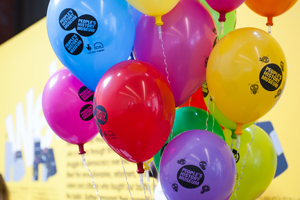
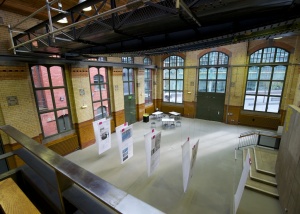
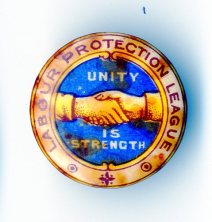
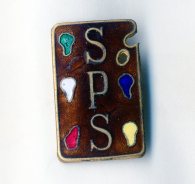
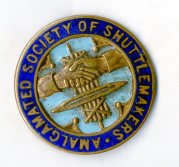
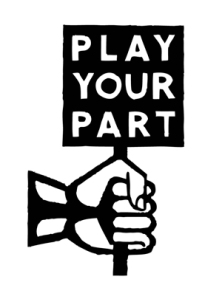
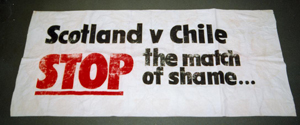
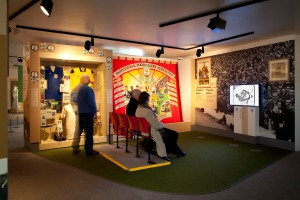 In the Time off? displays in our Main Galleries we look at how people campaigned for shorter working hours and once time off had been won, how did people spend that time? The 1850 Factory Act declared all work to be finished at 2pm on Saturdays, allowing workers to enjoy a Saturday afternoon of leisure. As a result of this football clubs enjoyed a huge increase in popularity. People found playing football and going to the match for the 3pm kickoff a popular way to spend Saturday afternoons.
In the Time off? displays in our Main Galleries we look at how people campaigned for shorter working hours and once time off had been won, how did people spend that time? The 1850 Factory Act declared all work to be finished at 2pm on Saturdays, allowing workers to enjoy a Saturday afternoon of leisure. As a result of this football clubs enjoyed a huge increase in popularity. People found playing football and going to the match for the 3pm kickoff a popular way to spend Saturday afternoons.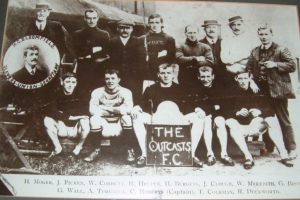 An early struggle occurred shortly after the union was formed. The Football Association banned players affiliated with the the union, and membership fell. However Manchester United players refused to relinquish their membership. They became known as ‘The Outcasts FC’, and helped to sustain the union in its turbulent early years.
An early struggle occurred shortly after the union was formed. The Football Association banned players affiliated with the the union, and membership fell. However Manchester United players refused to relinquish their membership. They became known as ‘The Outcasts FC’, and helped to sustain the union in its turbulent early years.